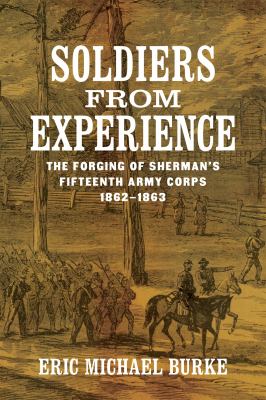
Book
|
Soldiers from experience : the forging of Sherman's Fifteenth Army Corps 1862-1863
-- Forging of Sherman's Fifteenth Army Corps, 1862-1863
Copies
2 Total copies, 2 Copies are in,
0 Copies are out.
Title
Soldiers from experience : the forging of Sherman's Fifteenth Army Corps 1862-1863 -- Forging of Sherman's Fifteenth Army Corps, 1862-1863
Call No
E493.1 15th .B87 2023
Authors
Subjects
Sherman, William T. (William Tecumseh), 1820-1891--Military leadership.
United States. Army. Corps, 15th (1862-1865)
United States. Army. Infantry--Drill and tactics--History--19th century.
Armed Forces--Drill and tactics
Command of troops.
Military campaigns.
Chattanooga, Battle of, Chattanooga, Tenn., 1863.
Atlanta Campaign, 1864.
Missionary Ridge, Battle of, Tenn., 1863.
Lookout Mountain, Battle of, Tenn., 1863.
United States--History--Civil War, 1861-1865--Regimental histories.
United States--History--Civil War, 1861-1865--Campaigns.
United States--History--Civil War, 1861-1865--Military Campaigns.
Vicksburg (Miss.)--History--Siege, 1863.
Regimental histories
Ringgold Gap
Tunnel Hill
History
United States. Army. Corps, 15th (1862-1865)
United States. Army. Infantry--Drill and tactics--History--19th century.
Armed Forces--Drill and tactics
Command of troops.
Military campaigns.
Chattanooga, Battle of, Chattanooga, Tenn., 1863.
Atlanta Campaign, 1864.
Missionary Ridge, Battle of, Tenn., 1863.
Lookout Mountain, Battle of, Tenn., 1863.
United States--History--Civil War, 1861-1865--Regimental histories.
United States--History--Civil War, 1861-1865--Campaigns.
United States--History--Civil War, 1861-1865--Military Campaigns.
Vicksburg (Miss.)--History--Siege, 1863.
Regimental histories
Ringgold Gap
Tunnel Hill
History
Language
English
Published
Baton Rouge : Louisiana State University Press, [2023]
Publication Desc
xii, 338 pages : maps ;
ISBN
9780807178096
hardcover
LCCN
2022007941
Target Audience
Unknown or not specified
Dimensions
24 cm.









